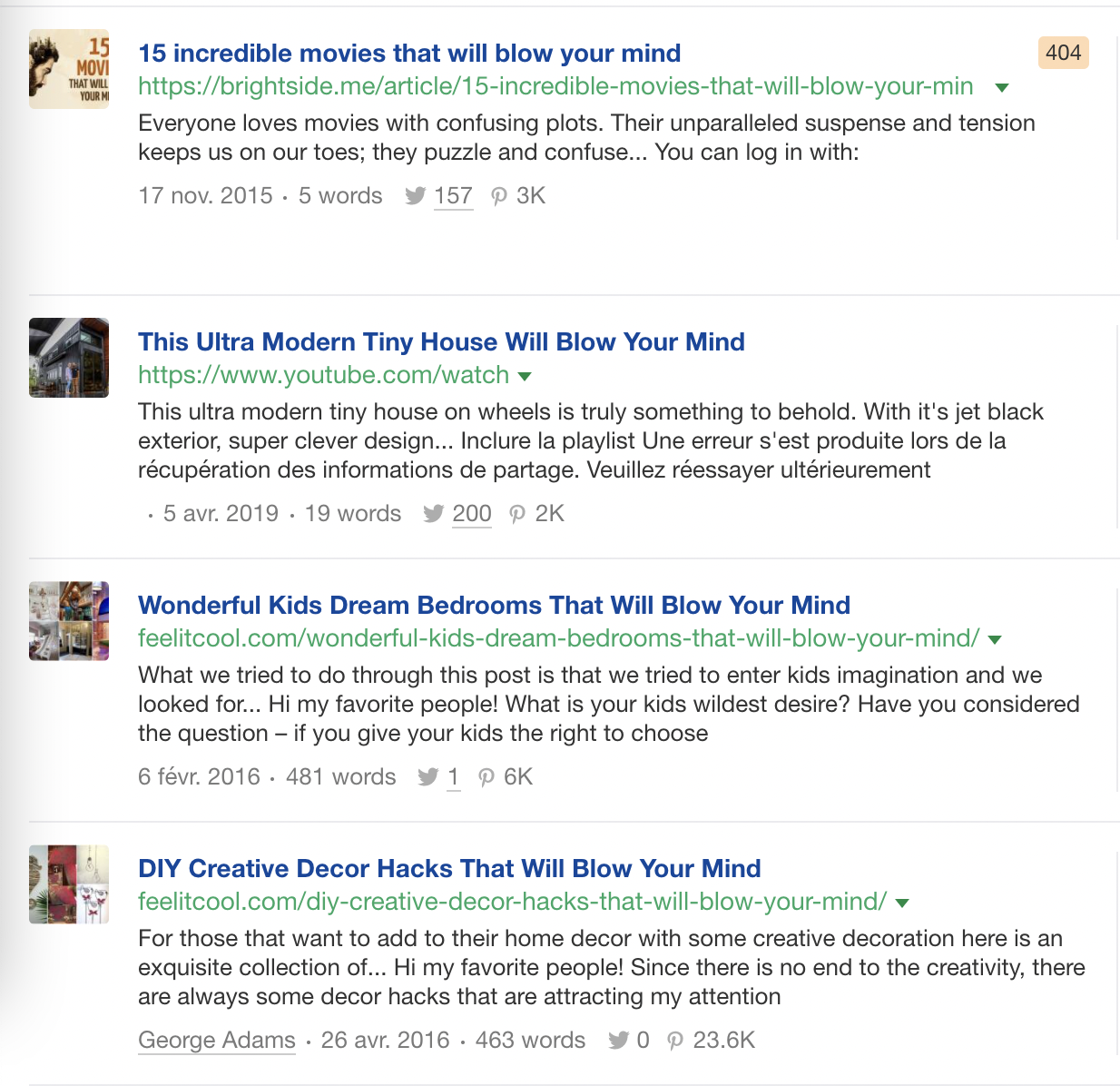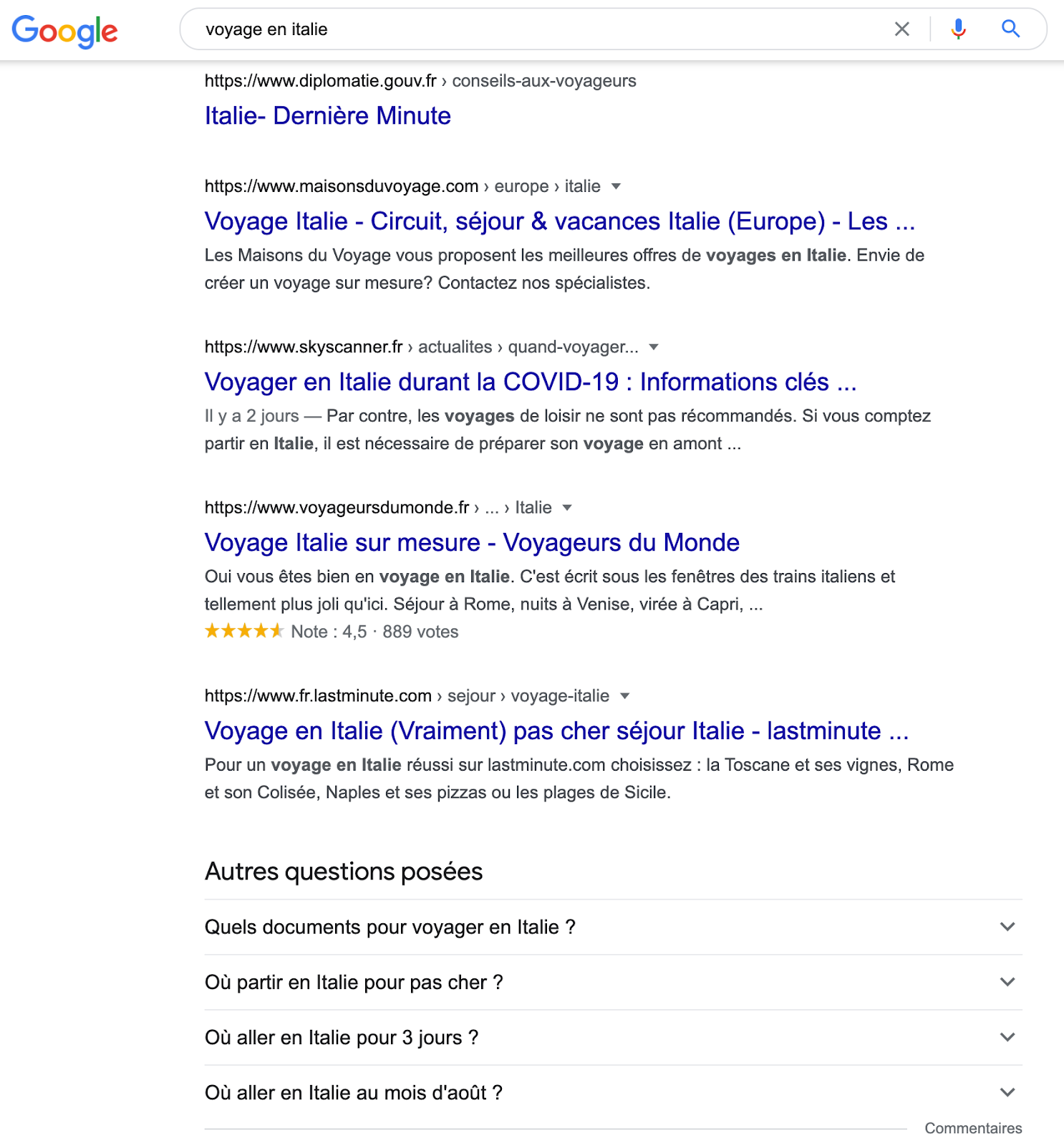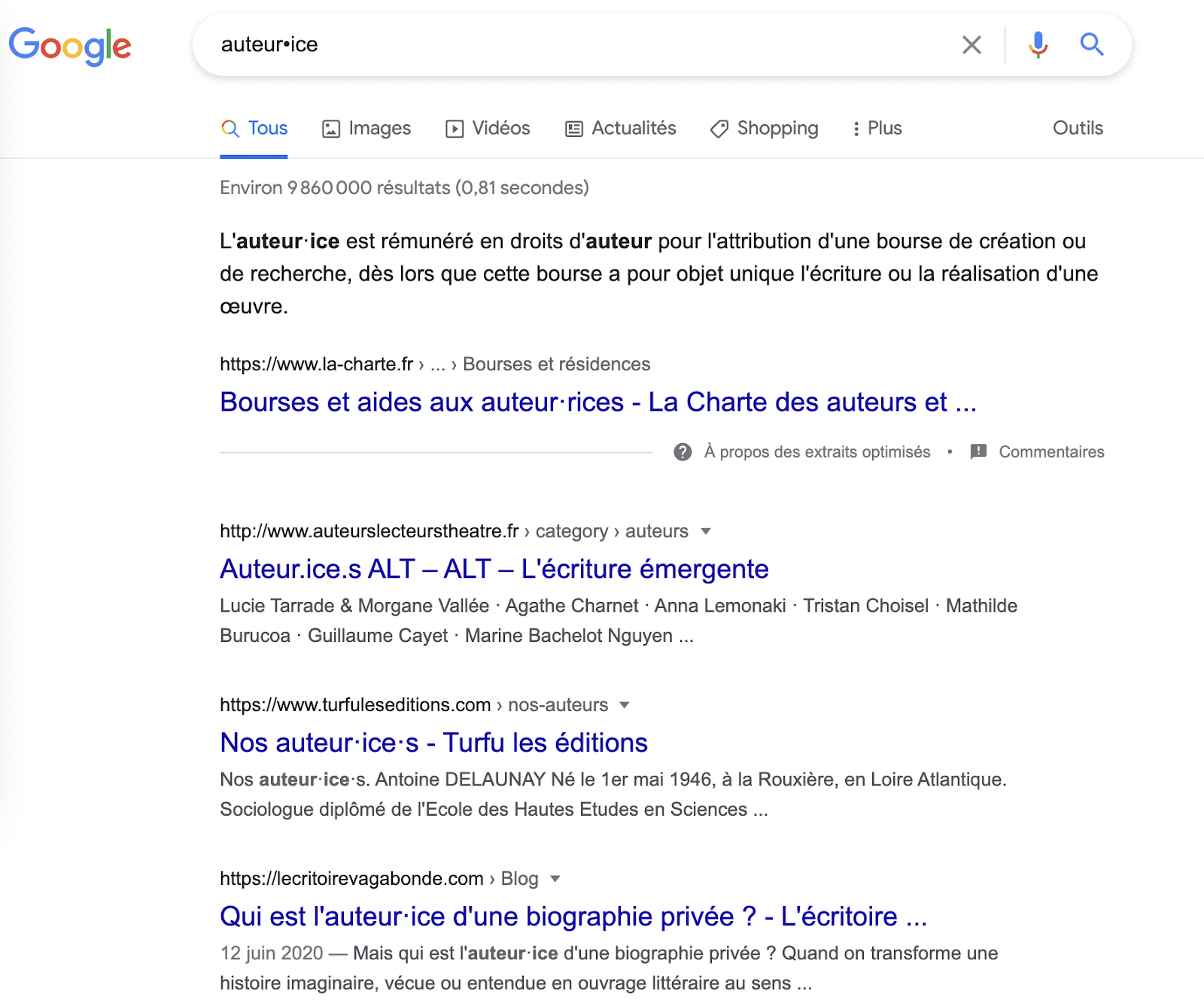L’écriture journalistique appliquée au web
Écrire pour le web demande d’élaborer une véritable stratégie de contenu, aussi appelée « content marketing », afin de définir des objectifs clairs et précis. On ne rédige pas pour le web exactement comme on le ferait dans le journalisme traditionnel. Si le web emprunte à la rédaction print et au journalisme des techniques et mécaniques, les rédacteurs web ont dû les adapter à ces nouveaux supports que sont les écrans, et les pratiques qui en découlent. Mais alors à quelles contraintes est confronté le rédacteur aujourd’hui ? Quels sont les héritages transmis par l’écriture journalistique ? Et quels points communs existent entre ces deux types de rédaction ?
Un contenu engageant, concrètement, c’est quoi ?
Rédiger du contenu, c’est bien. Rédiger un contenu pertinent et engageant, c’est mieux. Pour cela, l’écriture journalistique traditionnelle nous a transmis quelques bonnes pratiques en matière de rédaction qu’il est intéressant de connaître.
Penchons-nous d’abord sur les points communs que le journalisme a légués à l’écriture web.
Première étape : attirer le lecteur et capter son attention.
Deuxième étape : lui fournir des informations pour le divertir ou lui enseigner quelque chose.
L’objectif reste le même, peu importe le support : offrir un contenu de qualité pour le fidéliser.
Parmi les bonnes pratiques de rédaction de contenu, on peut citer :
Savoir hiérarchiser l’information. Ça, nous y reviendrons un peu plus tard.
Connaître la loi de proximité. Concrètement, le lecteur se sentira davantage concerné si l’action se passe près de chez lui. Cette proximité peut être géographique, mais aussi temporelle, émotionnelle, ou dépendre du milieu social.
Être précis et concis. Le lecteur n’a pas de temps à perdre. Il est constamment saturé d’informations et veut aller directement à l’essentiel.
Savoir titrer. Avant d’être lu, un contenu doit être vu. Le titre a un véritable impact visuel.
Penser à illustrer ses propos. Photos, dessins, graphiques, le lecteur comprendra plus facilement le message que vous souhaitez faire passer avec une illustration.
Maîtriser l’art du storytelling. Il s’agit tout simplement de savoir raconter une histoire. Cette méthode de communication permet de captiver le lecteur et de générer en lui des émotions afin de marquer son esprit et créer une relation unique entre vous et lui.
Afin de rendre votre contenu engageant sur le web, pensez à publier régulièrement afin de rester présent dans l’esprit du lecteur, et créer une sorte de routine et de rendez-vous réguliers avec lui. N’hésitez pas à diversifier vos articles, autant sur le fond que sur la forme. Créez des contenus interactifs où le lecteur se sentira investi et écouté.
Cas client
Nous travaillons avec le Rossel Est Médias pour la création de contenu pour les titres des journaux, les suppléments, magazines, ainsi que pour les projets de brand content portés par le groupe de presse.
En savoir plus
SEO : pourquoi on ne s’adresse pas uniquement à des robots ?
Lorsque l’on rédige sur le web, il faut répondre à des exigences de référencement imposées par les robots d’indexation dont GoogleBot, le célèbre robot de Google. Le souci avec Google, c’est que ses algorithmes changent tout le temps et il faut donc être réactif et maintenir une veille constante.
À une époque, intégrer dans une page le plus de fois possible un mot clé pouvait suffire à être bien référencé et se retrouver en tête des requêtes sur Google. De nos jours, cette méthode, également appelée suroptimisation ou keyword stuffing, est, au contraire, pénalisée par les moteurs de recherche.
Comme le dit l’adage, « content is king », or, les robots de Google sont uniquement capables de déterminer la présence des mots clés et non de la pertinence et de la valeur ajoutée d’un contenu. Seuls les internautes sont capables de déterminer la réelle valeur d’un contenu. D’où l’importance d’optimiser au mieux l’expérience utilisateur.
Car tout l’enjeu du SEO réside dans le fait de plaire autant à des robots qu’à des êtres humains. Et de se faire comprendre par ces deux entités ! Il est nécessaire de se mettre dans la tête d’un internaute et de comprendre quels mots clés l’intéressent et quelles réponses il souhaite trouver. Le travail de rédaction et le choix des mots clés vont alors devoir s’orienter autour de cette réponse. Maîtriser le SEO demande d’avoir une bonne maîtrise des mots.
Quand on parle de rédaction SEO, se mettre à la place de l’utilisateur est primordial. Cela nécessite un véritable travail d’empathie. Avant même de commencer à rédiger, la première étape est d’abord de savoir à qui on s’adresse. Pour cela, il faut donc établir nos « personas », c’est-à-dire les profils de notre public cible ainsi que leurs centres d’intérêts, leurs motivations, leurs contraintes et leurs besoins. Mais parfois, partir à la rencontre de potentiels clients est aussi nécessaire afin de mieux comprendre leurs attentes et d’y répondre le plus précisément possible.
Toutes ces contraintes demandent de respecter des critères techniques imposés par les robots et ceux psychologiques qui permettent de faire preuve d’empathie auprès des internautes.
En bref, écrire pour le SEO c’est surtout l’art de trouver le juste équilibre entre robots et humains.
« Ne faites pas d’écriture journalistique. Faites du journalisme. Ce n’est pas un style mais une méthode de travail. »
De l’importance du chapô et de la structure d’un texte
Le chapeau, ou « chapô » permet de résumer le message essentiel de votre texte et de donner envie aux lecteurs d’en savoir plus. Le chapô doit informer le lecteur autant que l’inciter à rester lire la suite de l’article. Pour cela, il se doit d’être court, quelques phrases simples suffisent, et contenir le mot clé principal du thème de l’article.
Il convient donc d’être vigilant au moment de sa rédaction quant au choix des mots clés et expressions susceptibles d’être utilisés par les internautes lors de leurs recherches. Pensez d’ailleurs à varier vos mots-clés. Pour cela, n’hésitez pas à utiliser des outils d’aide pour le choix des mots-clés tels que SemRush ou YourTextGuru. Savoir analyser les tendances de recherche s’avère être très efficace dans le cadre d’une stratégie SEO.
L’expression « will blow your mind » de plus en plus utilisé. – Source : Ahrefs Content Explorer.
L’expression « will blow your mind » de plus en plus utilisé. – Source : Ahrefs Content Explorer.
Que ce soit dans l’écriture journalistique ou la rédaction web, le lecteur doit avoir accès à l’information principale en quelques secondes seulement. Pour cela, on utilise la règle des 5W, couramment appelée en français, « QQOQCP ». Mais si, souvenez-vous de vos cours de français au collège ! Cette technique permet de répondre aux 5 questions que le lecteur va se poser avant de débuter sa lecture. A savoir, « Qui ? Quoi ? Où ? Quand ? Pourquoi ? », et parfois aussi « Comment ? ».
Afin de mettre cette règle en pratique, votre contenu devra suivre un plan hiérarchique bien précis dit en pyramide inversée. Il s’agit du plan journalistique par excellence parfaitement adapté au traitement d’une actualité sur le web. Le principe est simple, on part de l’information la plus importante à la moins importante.
Dans une époque où les internautes ont accès à une immense quantité d’informations, on parle d’ailleurs d’infobésité, il est important d’aller directement à l’essentiel et de garder en tête qu’un lecteur n’aura pas toujours le temps d’aller au bout de sa lecture. D’ailleurs, c’était quoi le dernier article que vous avez lu in extenso ?
Comment rédiger des titres optimisés pour le SEO et impactants ?
C’est à partir du titre que le lecteur se fait sa première impression et décide ou non de poursuivre sa lecture. Veillez donc à rédiger votre titre avec soin afin de le rendre impactant.
Dans l’idéal, le titre doit comporter entre 50 et 70 caractères, ce qui correspond à la limite affichée dans les résultats par Google. Il doit marquer les esprits et contenir un mot clé afin qu’il soit optimisé pour le référencement naturel.
Titre trop long, on y était presque !
Pour le choix de vos titres, préférez la voix active et l’utilisation de verbes d’action. Cela dynamise votre contenu grâce à une adresse directe au lecteur.
Si vous tenez un blog, la nominalisation peut aussi être utilisée. Cette méthode est surtout employée dans la presse par les journalistes, pour des slogans ou des titres de livres. Utiliser un groupe nominal est moins dynamique mais permet de donner beaucoup d’informations en quelques mots.
Soigner ses balises pour faciliter la lecture et générer des clics
Autre élément à surtout prendre en compte au moment de la rédaction web, les balises. Elles permettent de structurer le contenu des pages, aussi bien pour les robots d’indexation que pour les lecteurs qui y gagneront en visibilité sur les pages. Pour les rendre efficaces, intégrez des mots clés pertinents dans les balises. Parmi les balises importantes à intégrer dans vos articles, on retrouve :
La balise title doit obligatoirement contenir les mots clés du thème de l’article.
La balise meta description doit contenir environ 150 caractères. C’est très court pour présenter le contenu d’une page, alors il vaut mieux s’appliquer pour la rédiger !
La balise heading (H1, H2, etc.) sert à structurer et hiérarchiser votre contenu.
Les balises gras et italique servent à mettre en évidence les informations clés visuellement. La mode de mettre des termes en gras spécifiquement pour le SEO est complètement dépassée et cette pratique s’apparente vite à du keyword stuffing.
Les balises image permettent de décrire à Google le contenu d’une image afin d’optimiser votre référencement.
Plus le contenu de votre site internet sera structuré, plus le SEO sera efficace. Lors de l’intégration de votre texte dans votre CMS, veillez à bien les utiliser. Agrandir la police ne transforme pas une phrase en titre. La gestion du style d’une page (CSS) et son optimisation sémantique sont deux sujets différents. Ça fonctionne comme la mise en forme dans un logiciel de traitement de texte.
Une balise meta description bien rédigée permet également d’augmenter le CTR, c’est-à-dire le taux de clic vers votre site web.
Enfin, soyez honnêtes et oubliez les titres qui vendent du rêve dans le simple but d’obtenir des clics. Le clickbait est littéralement un « piège à clics » comme son nom l’indique. Certes cela attire du trafic sur votre site internet mais l’internaute, déçu, n’aura plus de raison de revenir et cela nuira à votre image de marque. De plus, bien souvent les articles qui découlent du clickbait sont de piètre qualité et n’abordent que partiellement le titre promis. Cette tendance est donc à éviter si vous souhaitez produire des contenus et un SEO qualitatifs.
Des titres Social Media Friendly
Pensez à varier vos titres selon les supports et ne pas oublier que ces contenus peuvent aussi être partagés sur les réseaux sociaux.
Facebook a d’ailleurs sorti en 2010 un protocole nommé Open Graph afin d’optimiser le partage des sites internet externes sur le réseau social. Cet outil, désormais utilisé par d’autres médias sociaux comme Twitter ou LinkedIn, est devenu essentiel dans le monde du webmarketing. Open Graph permet l’utilisation de balises dans le texte et la vignette du site internet afin de mieux gérer le partage des contenus avec les internautes.
On peut aussi imaginer avoir de bonnes performances SEO grâce à un copywriting efficace de titre, face à ses concurrents pourtant mieux positionnés, comme le montre cet exemple.
(Vraiment) ?
Longueurs des phrases et contenu clair
En matière de rédaction web, privilégiez les phrases courtes et concises qui apportent du dynamisme à votre texte. Gardez en tête qu’une phrase est égale à une idée. Pour ne pas effrayer le lecteur, faites plusieurs paragraphes afin d’avoir un texte aéré. Pensez également à utiliser un langage simple et compréhensible par tous et d’éviter les termes trop techniques.
Une bonne lisibilité est aussi un facteur très important à prendre en compte dans une stratégie SEO. Les textes avec une bonne lisibilité sont généralement mieux classés et améliorent l’expérience utilisateur.
La lisibilité concerne aussi bien la typographie que le niveau de compréhension du texte. La longueur des phrases et la longueur des mots sont notamment deux critères déterminants. Afin de savoir si votre texte remplit correctement les critères de lisibilité, il existe différentes méthodes d’évaluation.
Le test de Flesh mesure le degré de facilité d’un texte. Plus la note est basse et plus le texte est difficile à comprendre. En moyenne, la note de la plupart des textes standards est comprise entre 60 et 70.
Le test de Flesh-Kincaid évalue la lisibilité d’un texte en fonction du niveau scolaire américain. Pour un texte standard, la note moyenne est comprise entre 7,0 et 8,0.
Le test Gunning fog est également conçu dans le but d’évaluer la langue anglaise. Développé en 1952 par Robert Gunning, ce test est principalement utilisé dans le domaine de la gestion. Il évalue le nombre de mots, de mots complexes et de phrases que comporte le texte. Plus l’indice est élevé, plus le degré de compréhension est difficile.
Le test Coleman-Liau prend en compte le nombre de caractères en attribuant des scores allant de 1 à 12. Pour un texte de bonne lisibilité, un indice de 7 ou 8 est recommandé.
Le rôle du pronom personnel dans la production de contenu
Ça y est, votre stratégie est mise en place et vous avez déterminé vos personas. Il est maintenant temps de réfléchir au ton de votre ligne éditoriale.
On ne s’adresse pas de la même manière à des professionnels qu’à un public jeune. Le choix des pronoms utilisés (vous / tu) est donc très important. Les pronoms que vous utilisez vous permettent soit d’instaurer une certaine distance, soit un climat plus intime entre vous et le lecteur.
La question que tout le monde se pose en 2021, inclusivité ou pas ?
Aussi appelée langage épicène ou langage neutre, l’écriture inclusive fait parler d’elle et ce qui est sûr c’est qu’elle ne laisse pas indifférent. Bien qu’aucune étude ne le prouve sérieusement, il semble que l’inclusivité soit, pour le moment, à éviter dans le domaine du SEO. Le gouvernement français ainsi que l’Académie française ont d’ailleurs rejeté ce style d’écriture.
Il ne faut pas oublier que votre positionnement dépend des requêtes qui sont faites par les internautes sur les moteurs de recherche et les requêtes inclusives sont encore rares. De plus, les résultats d’une recherche en écriture inclusive ne donnent pas toujours les mêmes qu’en écriture classique.
Le terme « auteur•ice » envoie vers des résultats très différents de « auteur », montrant aussi une certaine pertinence de Google ici car on trouve des contenus utilisant volontairement l’écriture inclusive.
Néanmoins, nous avons pu remarquer que les médias sont de plus en plus nombreux à utiliser l’écriture inclusive, tel que le magazine en ligne Slate qui a fait le choix d’une écriture plus équitable. Ou le journal Libération qui aime utiliser l’écriture épicène dans ses tweets mais préfère encore garder une écriture classique dans la rédaction de ses articles pour une meilleure stratégie de communication.
Si vraiment vous tenez à utiliser l’écriture inclusive dans vos contenus web, préférez-la dans le corps de vos articles et évitez-la dans la rédaction de vos titres, URL et meta descriptions afin d’optimiser vos résultats SEO.
Olivier Andrieu a répondu à la question dans une vidéo de la chaîne Abondance en indiquant « Si on écrit en écriture inclusive, il y a assez peu de chances d’être trouvé avec des requêtes classiques. Cela dépendra aussi des mots et du type d’écriture inclusive utilisée. […] Tant que les moteurs de recherche ne traitent pas ce genre de requête, l’écriture inclusive n’est pas une bonne idée en SEO. »
Enfin, n’oublions pas que ce sont les internautes eux-mêmes qui décident des usages de la langue française sur le web. Gardons un œil ouvert sur les habitudes de rédaction en matière de requête et voyons ce que l’avenir nous réserve !
La phrase interrogative pour dynamiser des contenus
Une des méthodes les plus efficaces pour dynamiser un article est l’utilisation de la phrase interrogative. En effet, un titre sous forme de question attire la curiosité des lecteurs. Si vous commencez votre article par une question, alors le lecteur voudra très probablement connaître la réponse en lisant le contenu. L’objectif de la phrase interrogative est de faire réagir le lecteur en le faisant cliquer sur votre article. Enfin, d’un point de vue référencement naturel, pensez que les internautes ont souvent tendance à écrire leur requête sous forme de question. « Comment ? » et « Pourquoi ? » font par exemple partie des amorces de titres tendances les plus recherchés par les internautes. Cela vous permettra d’avoir le bon mot clé facilement.
Et les questions rhétoriques dans tout ça ? En plus d’éveiller la curiosité, ce genre de question permet de convaincre l’internaute et de le faire réfléchir. C’est un bon moyen pour le faire réagir et lui donner envie d’interagir avec vous et de vous lire.
Rédacteur web, concepteur/rédacteur, journalistes : des métiers au coeur de la production de contenu
Lorsqu’il s’agit de rédaction de contenus, sur le web ou prints traditionnels, plusieurs techniques et bonnes pratiques se retrouvent. Les frontières entre les métiers sont poreuses et bien souvent des similarités se retrouvent entre chaque formation. On ne saurait d’ailleurs trop dire quel métier en influence un autre de nos jours.
Le métier de rédacteur web, comme celui de journaliste ou de concepteur rédacteur, demande de rechercher des informations afin de proposer un contenu original. Ces professions demandent de bonnes compétences techniques linguistiques et un goût prononcé pour la créativité.
Quel que soit le métier abordé lorsqu’il s’agit de rédaction de contenus, une passion pour l’écriture et une veille constante dans les domaines du marketing et de la communication sont indispensables.





